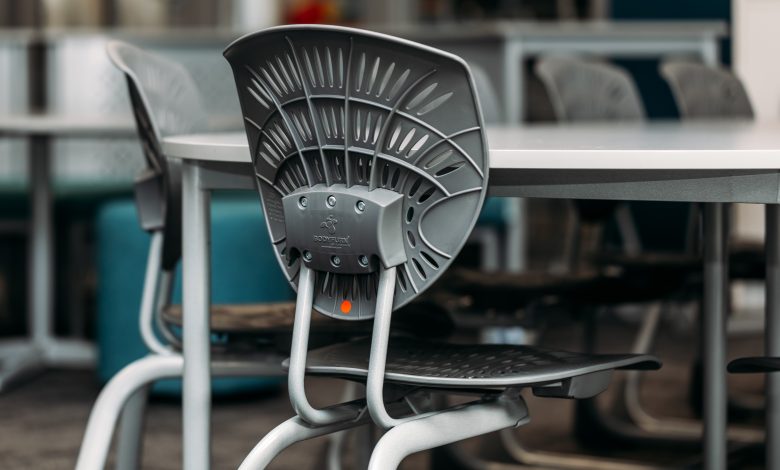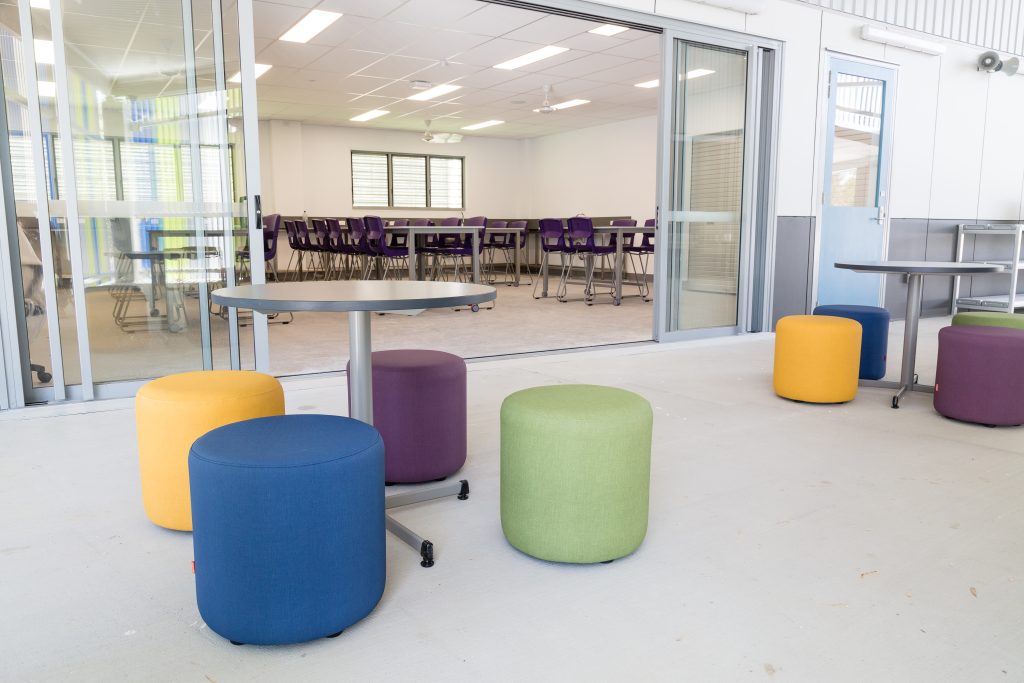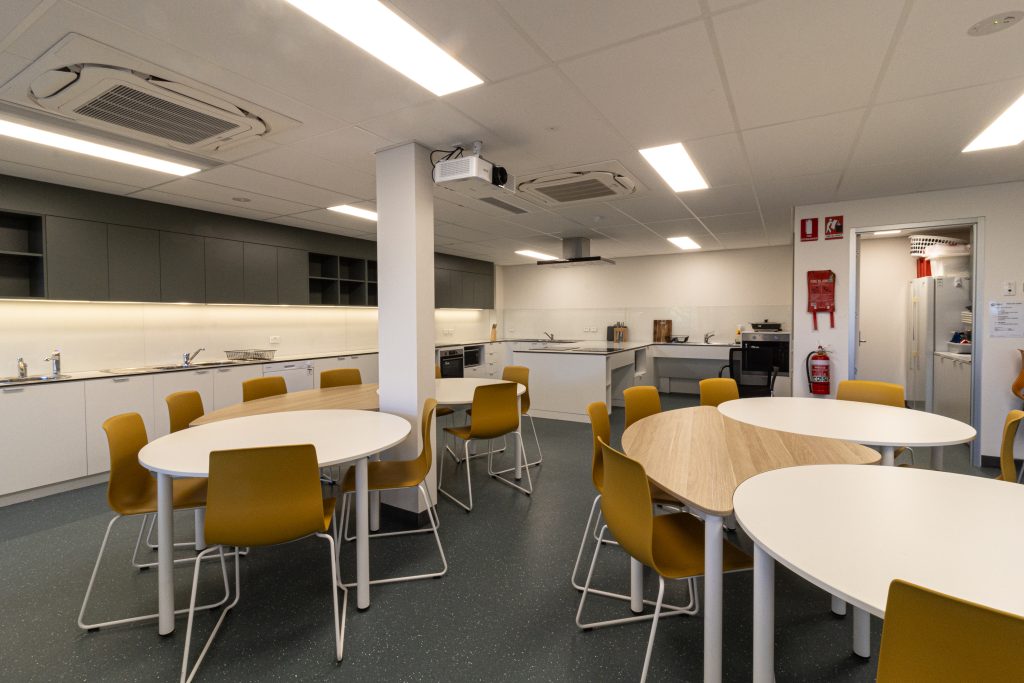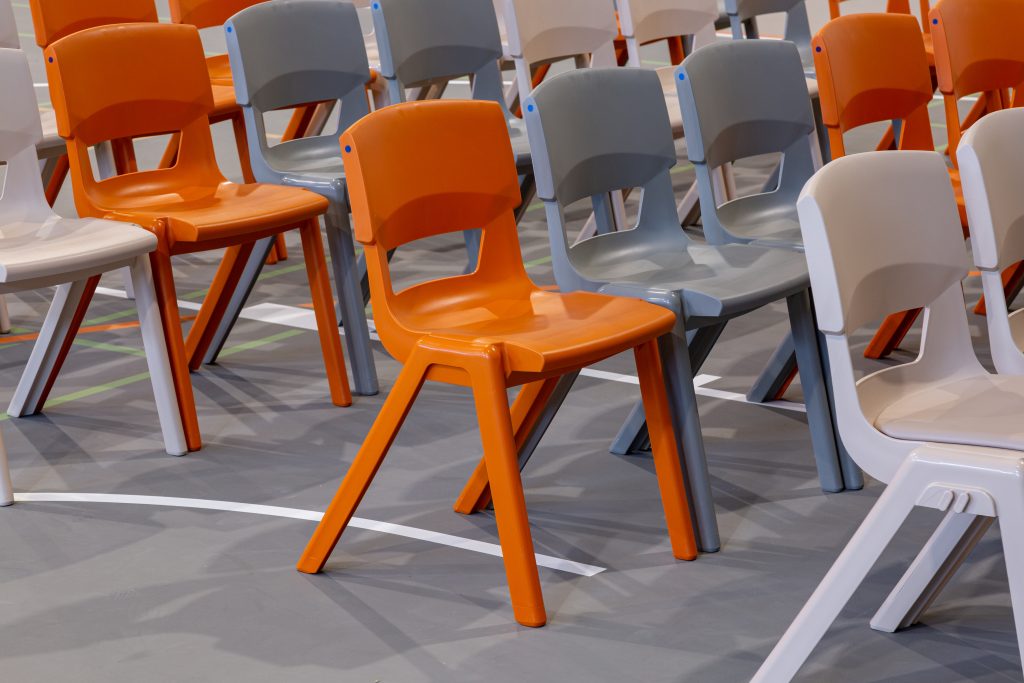Choosing your classroom chairs
What are the best chairs for the different spaces and activities in your school? We talk to the industry insiders to find out.

Chances are, right now, you are sitting down. Chairs and seating options are everywhere in your school – the classroom, staff room, library and reception area.
Read the latest print edition of School News HERE
There is a lot of debate over the best way to arrange your classroom for optimal learning. Horse shoe, semi-circle, u-shape and rows are all popular configurations, and experts suggest seating set up should be regularly changed to suit the activity and student preferences. Happily, there are a wide variety of seating options to accommodate all learners, activities, and spaces.
Smarter than your average chair
Modern classrooms are moving away from the standard desk and chair model. And while seating is still essential in classrooms, it now comes in a variety of new and exciting iterations.
Bean bags have been shown to improve student posture, fully supporting the head, neck, shoulders, back and hips. They are particularly helpful in positioning young people with limited mobility function. Balance balls, another fun seating choice, can also promote good posture and build core strength, helping to mitigate back pain which can result for a poor sitting position.
For floor work, floor cushions and mats can provide students with some comfort and support without the need for cumbersome furniture. These are small and light, making them a great portable seating option for when your class is working outdoors or moving to another area of the school.

Incorporating seating options like bean bags, balance balls and cushions may also help to differentiate learning activities for students. More informal, conversational learning may take place in these relaxed seats, with pen and paper work at desks still happening in standard chairs.
Even the standard chair, though, has evolved. Innovations like wobble stools and saddle chairs help students to remain focussed at their desk. The design encourages students to maintain good posture and lets them move slightly while they work. Restless students, who find it hard to keep still, report great benefits from this style of seating.
Special seats for special settings
Areas like art studios, science labs and STEM spaces will have particular seating requirements. Here, high stools may be appropriate to facilitate work at benches. Chairs with adjustable heights will mean the same chairs can be used for different heights of desks. Opt for surfaces which can be wiped down easily, so they can be cleaned if there are any spills. Some specialist spaces, like science rooms, have specific safety requirements, so ensure seating adheres to these.
For reading nooks and chill out zones, soft, fabric seating is an ideal choice. Pair these with sumptuous cushions to enhance relaxation. Elements like curtains, or nooks built into a wall can add a sense of privacy, while still allowing for staff supervision. Introducing a variety of textures will make the space visually appealing and can help some students self-regulate through sensory stimulation.

Flexible, functional and affordable
Getting as much seating for you buck as you can may mean investing in flexible options. Modular units can be reconfigured in various ways, so one piece of furniture can accommodate individual work, group activities, and whole class learning.
Lightweight, stackable chairs that can be moved out of the general learning area will make transforming these spaces quick and easy. Adjustable chairs will be suitable for older and younger students, as they can be changed to suit the individual.
We asked some furniture specialists for more on school seating options
Victoria Jackson from Furnware said student wellbeing has a big impact on academic performance, engagement, attendance, and quality of relationships. “When students feel physically and emotionally comfortable in their learning space, they’re better prepared to learn and grow. Ergonomic, flexible, and engaging furniture can help with this.”

Bringing natural elements into the classroom can help support student engagement, and Ms Jackson pointed to a range of ways to introduce natural elements in your seating. “Incorporating wood look materials throughout the classroom and having chairs to complement them helps complete the space. Selecting earthy tones for your seating can give your classroom a natural look and ensure students feel connected with the space.
“When designing optimal spaces to keep students focused it is important to understand individual student requirements. Some students will need seating that rocks or wobbles, whereas others will keep focused on standard seating,” Ms Jackson said. “Having tiered seating is another way to help students remain focused as they have a better view of the classroom. Bringing in textures to furniture can also help neurodiverse students self-regulate and stay relaxed.”
When refreshing specialist spaces like STEM rooms, art rooms and science labs, Jaime Hallett from Sebel recommends considering safety, as well as other equipment in the space. “When reinvigorating these spaces some of the things that can be rolled out in all rooms would be introducing storage options to keep the space neat and tidy, as well as flexible furniture that can be moved around based on the teaching style or lesson.

“For the ultimate flexible seating, you need to tick a few boxes when it comes to the features of the product. Flexible seating needs to be easily moved and stored in the learning space. Keeping chairs lightweight and stackable allows teachers and students to move them around the classroom as needed. It’s also a great addition to have a trolley to move the chairs for quick and easy storage.
“Bringing in pops of colour in your seating is also a great way to create a vibrant space without compromising on the space requirements.
For balancing durability and comfort in seating solutions, Ms Hallett urges schools to look for evidence of efficacy. “Ensuring the products you are placing in your classroom are backed by research and genuinely built to last gives you the durability for the product to last many years without losing out on comfort.”
Michael Merlino from Resource Furniture said investing in aesthetically pleasing and functional furniture is becoming a priority for schools. “This can be achieved by selecting seating options that offer a family of base designs, such as chairs with sled bases, castor bases, upholstered versions, and stools. This versatility allows for the creation of formal, informal, and breakout spaces with a cohesive look and feel, enhancing the overall learning environment.

“The best student seating solutions combine ergonomic design, flexibility, and a variety of options to create a comfortable and adaptable learning environment. Everything from floor cushions, traditional sled base chairs and bench height stools work really well,” Mr Merlino said.
“Stackable sled chairs are still the most popular element of any learning space. Sled base chairs are preferred over four-leg chairs for safety, and for the ability to quickly stack chairs away and reconfigure spaces,” Mr Merlino said. “Soft seating continues to be popular for collaboration, in both common and classroom spaces as they allow students to go off and focus in dedicated and comfortable areas.”
To ensure seating is durable and sustainable, Mr Merlino recommends prioritising high-quality materials such as reinforced plastics, metals, and durable fabrics. “Opting for eco-friendly materials is also crucial; this includes choosing furniture made from recyclable materials or sustainably sourced wood, which helps minimise environmental impact.
“Schools should verify the credentials of manufacturers, looking for certifications that attest to the durability, sustainability, and safety of their products. Reviews and case studies from other educational institutions can provide valuable insights into the performance and longevity of the seating options.”







